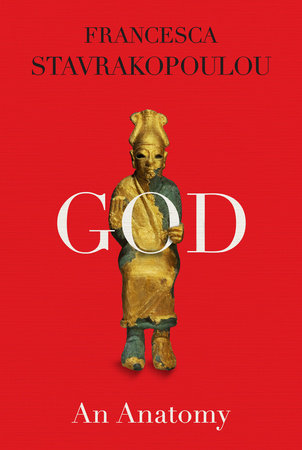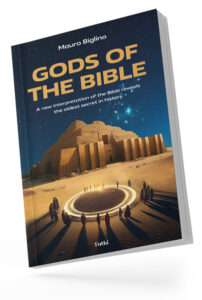In the landscape of biblical studies, a book like Francesca Stavrakopoulou’s “God: an anatomy ” does not go unnoticed. With the courage and boldness typical of those who dare to challenge academic conventions, the scholar, a professor of theology at the University of Exeter, tackles a topic that is often overlooked or downplayed: the physicality of the biblical God, Yahweh. It is this work, dense with analysis and reflection, that Mauro Biglino and Gian Matteo Corrias discuss in their latest dialogue, highlighting the insights and provocations the text offers.
English subtitles
A “surgical” analysis of Yahweh’s body.
Biglino and Corrias introduce the book as a true “anatomy treatise” that examines every part of Yahweh’s body with surgical precision. Stavrakopoulou uses the biblical text and a wide range of extrabiblical sources to delineate a physical and concrete representation of the deity, analyzing surprising and, often, uncomfortable details. This choice of method, called “explicit and unashamed” by the authors, challenges the spiritualized and transcendent view that dominates the Western theological tradition.

Divine physicality between the Bible and Levantine culture
A central aspect of the book is the recovery of Yahweh’s corporeality in the context of the Levantine pantheon. Stavrakopoulou identifies Yahweh as one of the sons of El, a major deity, and places his origin in the desert of Teman. This places him in a polytheistic framework in which he emerges not as the only God, but as one of many Elohim, endowed with human powers and characteristics, including marked physicality.
Among the most emblematic examples, the author explores the relationship between Yahweh and Asherah, a female figure who, in the sources, plays the role of mediator between the divine and men. However, as Biglino and Corrias point out, this association was not pleasing to Yahweh, whose jealousy is clearly manifested in the Bible.

The spiritualization of the biblical text
The process of spiritualization of the Bible, which began in the postexilic period, gradually distorted the physical, concrete image of Yahweh, turning him into an abstract, transcendent figure. Stavrakopoulou, as the authors note, brings attention back to the literalness of the biblical text, pointing out that many characteristics attributed to Yahweh derive from a distinct cultural and anthropological context.
For example, binge drinking during sacrifices, jealousy toward other deities, and even the detail of genital size are all descriptions that emerge from a literal reading of the Bible and related sources. Details that, according to Biglino and Corrias, confirm the extent to which the biblical God was represented with deeply human traits.

A new perspective on biblical studies
Stavrakopoulou’s approach is an example of academic freedom that breaks with traditional theological patterns. Her analysis asks fundamental questions about the nature of the biblical text: can it be considered a historical source? According to the author, yes, but with due caution, since the Bible reflects a Judeocentric perspective that often downplays figures and events that do not conform to the dominant narrative.
A bridge to the studies of Biglino and Corrias.
“God: An Anatomy” connects naturally with the studies and publications of Mauro Biglino and Gian Matteo Corrias, published by the Tuthi publishing house. Works such as Biglino’s “The Gods of the Bible” explore the literalness of the biblical text and the polytheistic context of its origins, while Corrias’ “Before Faith”“ and “The Revealed Roman Gods” respectively investigate the processes of spiritualization of religion and the physical and ritual aspect of the Roman gods. All these works share the goal of bringing to light a concrete and historical view of the gods, far removed from later spiritualization. Francesca Stavrakopoulou’s methodical and philological approach reinforces and enriches the path taken by Biglino and Corrias, providing additional insights into the relationship between deities, physicality and ancient cultural context.





